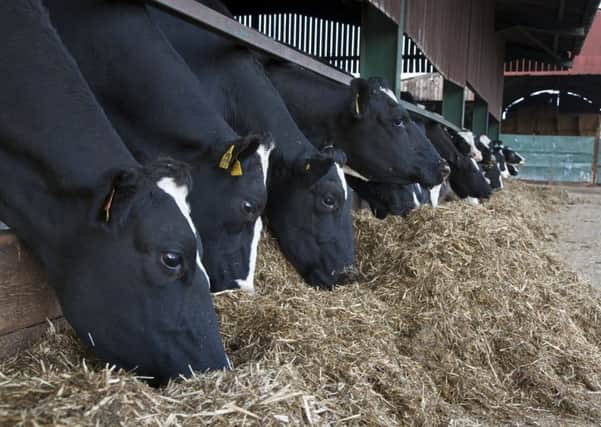DAERA Notes: Dairying


Providing a minimum of 600mm barrier feed space and 10cm water drinker space per cow to maximise feed intake.
Housing them at a reduced stocking density, not every cubicle space needs filled! This gives the cows a chance to feed, drink and lie when they want to reducing their social stress.
Advertisement
Hide AdAdvertisement
Hide AdFeeding the best silage on the farm. Use silage analysis to determine your best silage. Harvesting conditions were reasonably good this May and first cut silage quality is generally good on most farms. However, if silage quality is variable, it is important freshly calved cows receive your best silage.
Returning cows quickly to the feed barrier after milking and providing fresh feed regularly throughout the day.
Managing colostrum
Now that calving is in ‘full swing’ on many farms it is an opportune time to highlight the importance of colostrum for the new born calf. Remember the four Qs:
Quantity - ideally 10% of the calf’s weight or around four litres. Calves that do not receive sufficient colostrum are three times less likely survive to four months of age.
Advertisement
Hide AdAdvertisement
Hide AdQuality - colostrum quality is poorer from first lactation animals, higher yielding Holstein cows and cows which have had a shorter dry period (less than three weeks). Use a colostrometer or refractometer to test colostrum quality. The threshold is 50g IgG (immunoglobulin) per litre. Anything more than this is classified as good quality colostrum. Vaccinating the cow pre-calving is often used to deliver pathogen specific antibodies in the colostrum. Vaccination protocols are critically important as pathogen (E. coli, Rotavirus and Coronavirus) inhibition levels are greatly reduced if cows are vaccinated within three weeks of calving.
Quickly - as soon as possible after birth and within six hours at the latest. Antibody absorption rapidly declines after this.
Quietly - do not stress the calf while feeding, absorption rates are lower when a calf is stressed.
Other important points include:
Avoid pooling colostrum from different cows due to the risk of transmitting diseases, for example Johne’s disease.
Advertisement
Hide AdAdvertisement
Hide AdGood quality colostrum can be stored in a covered container in the fridge for up to 24 hours.
Colostrum has a 12 month shelf life in the freezer. Thaw it out gradually, not in a microwave! If flat pack bags have been used thawing time will be less due to the greater surface area.
Don’t forget the importance of good hygiene. If the calf is allowed to suckle, ensure the cows’ udder and teats are clean beforehand to minimise bacterial ingestion. For colostrum collection ensure clean containers are used. Thoroughly clean buckets, teats and tubes before use.
November jobs checklist
If you haven’t to date, do a feed budget immediately, if you have monitor regularly and act early if you need to adjust.
Advertisement
Hide AdAdvertisement
Hide AdIdentify cows to dry off in the next two months and assess body condition. Cows with a condition score less than three should be fed additional concentrates to improve body condition.
Assess body condition of young stock, especially maiden heifers - will they be in the right condition for service? Do you need to increase the feed rate?
Are any vaccinations, for example BVD due well in advance of the breeding season?
Prepare for the incoming breeding season. How good are your heat detection rates? Can these be improved? Have you selected suitable bulls to achieve your long term breeding goals?
Advertisement
Hide AdAdvertisement
Hide AdCalibrate parlour and out of parlour feeders to ensure accurate feeding.
Now that the hour has changed ensure all time clocks have been changed. If a time clock is only one hour wrong on a 6 kW water heater it can cost an extra £170 per year at current electricity prices.